TYPE DESIGN INFORMATION PAGE last updated on Fri Nov 14 12:49:29 EST 2025
FONT RECOGNITION VIA FONT MOOSE
|
|
|
|
|
Gujarati fonts | ||
|
|
|
|
SWITCH TO INDEX FILE
Indic font makers. They made fonts such as AkrutiOfficeShyama for Gujarati. [Google] [More] ⦿ | |
ItxBeng (Bengali, 1997), ItxGuj (Gujarathi, 1997, by Shrikrishna Patil), NCS_CSX+ (URW's Sanskrit, 1994), Xdvng (1997). [Google] [More] ⦿ | |
Ami Shah (Mumbai) drew various experimental Latin alphabets in 2012. During her studies at IDC, IIT Bombay, she designed IDC Gujarati (2012). [Google] [More] ⦿ | |
Her typefaces:
Fontsquirrel link. Behance link. [Google] [More] ⦿ | |
Free truetype fonts (ISFOG family) for Hindi, Marathi, Nepali, Gujarati, Tamil, Punjabi, Bengali, Assamese, Telugu, Malayalam, Kannada, Oriya. [Google] [More] ⦿ | |
Elk Grove Village, IL-based company established in 2004, which specializes in font development, licensing and IP protection. It rose from the ashes of a major fire at Agfa/Monotype at the end of 2003. Its founders are Steve Matteson (type designer, formerly with Agfa/Monotype), Thomas Rickner (of Microsoft fame, where he hinted many Microsoft families), Ira Mirochnick (founder and President of Monotype Typography Inc in 1989 (where he was until 2000) and a Senior Vice President and director of Agfa Monotype Corporation (2000-2003), a self-proclaimed expert in font licensing issues and IP protection), and Bill Davis (most recently the Vice President of Marketing for Agfa Monotype). Also included in this group are Josh Hadley, Brian Kraimer, Jim Ford (since 2005), and Jeff Finger (as Chief Research Scientist, since 2006). On December 8, 2010, Ascender was acquired by Monotype for 10.2 million dollars. Their typefaces include Endurance (2004, Steve Matteson, an "industrial strength" Grotesk designed to compete with Helvetica and Arial; it supports Greek, Cyrillic and East European languages). In April 2005, Ascender announced that it would start selling the Microsoft font collection, which is possibly their most popular collection to date. They also started selling and licensing IBM's Heisei family of Japanese fonts in April 2005: Heisei Kaku Gothic, Heisei Maru Gothic and Heisei Mincho. Ascender's version of the CJK font Heiti is called ASC Heiti. Also in 2005, they started distributing Y&Y's Lucida family. In October 2005, Ascender announced the development of Convection, a font used for Xbox 360 video games. Their South Asian fonts cover Bengali, Devanagari, Gujarati, Gurmukhi, Kannada, Malayalam, Tamil and Telugu, and include Ascender Uni, Ascender UniDuo and Arial Unicode for general use across all Indic languages, and, in particular, the Microsoft fonts Vrinda (Bengali), Mangal (Devanagari), Shruti (Gujarati), Raavi (Gurmukhi), Tunga (Kannada), Kartika (Malayalam), Latha (Tamil) and Gautami (Telugu). Khmer SBBIC (2011) is a Khmer font at Open Font Library. It does more type trading and licensing than type creation, although Steve Matteson has contributed fairly well to their new typefaces. Their brand value took a hit when they started selling scrapbook, handwriting and wedding fonts under the name FontMarketplace.com. Recent contributions: Crestwood (2006, a house face, possibly by Steve Matteson) is an updated version of an elegant semi-formal script typeface originally released by the Ludlow Type Foundry in 1937. In 2009, they started a subpage called GoudyFonts.Com to sell their Goudy revivals. In 2010, they announced a new collection of OpenType fonts created specifically for use in Microsoft Office 2010: Comic Sans 2010 (including new italic and bold italic fonts), Trebuchet 2010 (including new black&black italic fonts), Impact 2010, Pokerface 2010, Rebekah 2010 and Rebus Script 2010. Ligatures in Comic Sans? View Ascender's typefaces. [Google] [MyFonts] [More] ⦿ | |
Born and brought up in Mumbai, Ashish Kalpund graduated from Sir J.J. Institute of Applied Art in 2009. He explains about his ornamental typeface Kundankari (2011): Kundankari, is a prime example where art of jewelry making helps complement the beauty of an Indian woman. Introduced by Mughals, this art form is still prevalent in the states of Rajasthan and Gujarat. This jewelry involves the process of embellishing pearls and precious stones in a frame of goldstring. Another link. In 2010, he made several experimental typefaces. [Google] [More] ⦿ | |
Wide range of Hindi and Gujarati fonts. Download GSOnline, made by Gujarat Samachar. [Google] [More] ⦿ | |
Asmita (1999) was at one poin a free Gujarati truetype font. [Google] [More] ⦿ | |
Atul and Saurabh designed the free Gujarati font AU (2001) for Amar Ujala. [Google] [More] ⦿ | |
Avinash Chopde
| |
Baloo
| Baloo is a free display font available in nine Indian scripts along with Latin. Included are Baloo-Devanagari, BalooBhai-Gujarati, BalooTammudu-Telugu, BalooBhaina-Odia (Oriya), BalooChettan-Malayalam, BalooDa-Bangla, BalooPaaji-Gurmukhi, BalooTamma-Kannada, and BalooThambi-Tamil. The project's leader is Girish Dalvi, and the project is in the hands of Ek Type. Type design help came from Ek Type, and in particular from Ek Type's Sarang Kulkarni (for Devanagari) and Noopur Datye (for Baloo Da-Bangla). Maithili Singre helped with Malayalam. Baloo Bhai was designed by Supriya Tembe and Noopur Datye. Baloo Thambi is designed by Aadarsh Rajan. Google Fonts link. Baloo 2 (2021) consists of ten font families with unique local names for each of the nine Indic scripts plus Arabic (Baloo Bhaijaan 2, by Sanskriti Dholi and Noopur Datye). Each family supports one Indic/Arabic script plus Latin, Latin Extended, and Vietnamese. The Gurmukhi is designed by Shuchita Grover; Bangla by Noopur Datye and Sulekha Rajkumar; Odia by Yesha Goshar, Manish Minz, and Shuchita Grover; Gujarati by Noopur Datye and Supriya Tembe; Kannada by Divya Kowshik and Shuchita Grover; Telugu by Maithili Shingre and Omkar Shende; Malayalam by Maithili Shingre and Unnati Kotecha; and Tamil by Aadarsh Rajan. Baloo Devanagari and Latin are collaboratively designed by Ek Type. Font engineering and type design assistance by Girish Dalvi. [Google] [More] ⦿ |
Winnipeg-based designer of a set of 23 Hindi, Sanskrit, Gujarati, Marathi and Sindhi-Devnagari truetype fonts (20 USD for the set). See also here. The Bhagwan has a Bachelor of Engineering degree (1952) from the University of Poona, India, and a Doctor of Philosophy degree (1965) from Bombay University. [Google] [More] ⦿ | |
Site with fonts representing all Indic scripts (all made by C-DAC, Pune): AS-TTDurga-Normal, BN-TTDurga-Normal, DV1-TTYogesh-Normal, DV-TTYogesh-Normal, GJ-TTAvantika-Normal, KN-TTUma-Normal, ML-TTKarthika-Normal, OR-TTSarala-Normal, PN-TTAmar-Normal, TL-TTHemalatha-Normal, TM-TTValluvar-Normal. [Google] [More] ⦿ | |
| |
Free Gujarati fonts made in 2005-2006: GIST-GJOTPrachi-Bold, GIST-GJOTPrachi-BoldItalic, GIST-GJOTRishita-Italic, GIST-GJOTRishita-Normal, GIST-GJOTSumitra-Bold, GIST-GJOTSumitra-BoldItalic, GIST-GJOTSumitra-Italic, GIST-GJOTSumitra-Normal, GIST-GJOTVenu-Bold, GIST-GJOTVenu-BoldItalic, GISTGJOTChitraBold, GISTGJOTChitraBoldItalic, GISTGJOTChitraCondenseBoldItalic, GISTGJOTChitraCondensed-Bold, GISTGJOTDamodarBold, GISTGJOTDamodarBoldItalic, GISTGJOTDamodarItalic, GISTGJOTDamodarNormal, GISTGJOTKaminiBold, GISTGJOTKaminiBoldItalic, GISTGJOTKaminiItalic, GISTGJOTKaminiNormal, GISTGJOTKapilaBold, GISTGJOTKapilaBoldItalic, GISTGJOTKapilaItalic, GISTGJOTKapilaNormal, GISTGJOTPiyushBold, GISTGJOTPiyushBoldItalic, GISTGJOTPiyushItalic, GISTGJOTPiyushNormal, GISTGJOTPrabhaBold, GISTGJOTPrabhaBoldItalic, GISTGJOTPrabhaItalic, GISTGJOTPrabhaNormal, GISTGJOTPratikBold, GISTGJOTPratikBoldItalic, GISTGJOTPratikItalic, GISTGJOTPratikNormal, GISTGJOTRohitBold, GISTGJOTRohitBoldItalic, GISTGJOTRohitItalic, GISTGJOTRohitNormal, GISTGJOTShreedeepBold, GISTGJOTShreedeepBoldItalic, GISTGJOTShreedeepItalic, GISTGJOTShreedeepNormal, GISTGJOTSnigdhaBold, GISTGJOTSnigdhaBoldItalic, GISTGJOTSnigdhaItalic, GISTGJOTSnigdhaNormal. [Google] [More] ⦿ | |
Company in Mumbai (with offices in Bangalore) that made these Malayalam fonts: AkrutiMal1, AkrutiMal2 (2002). They also created the Kannada font LangscapeKndPadma. Here, you can download their Devanagari family Gargi, and their Gujarati font family Padmaa. They also made the well-known Akruti font family which can be downloaded here: AkrutiBng2Bold, AkrutiBng2Normal, AkrutiDev2Normal, AkrutiGuj1Normal, AkrutiGujL1Bold, AkrutiKnd1Bold, AkrutiKnd1Normal, AkrutiMal2Bold, AkrutiMal2Normal, AkrutiOri1Bold, AkrutiOri1Normal, AkrutiPnj2Bold, AkrutiPnj2Normal, AkrutiTlg2Bold, AkrutiTlg2Normal, AkrutiTml1Bold, AkrutiTml1Normal. These fonts cover Devanagari, Gujarati, Telugu, Tamil, Malayalam, Kannada, Bengali, Oriya, and Gurumukhi. [Google] [More] ⦿ | |
From 2004 to 2007, he ran his own design studio DAVI, with projects in graphic, web and interface design. Back in Brno, he worked with Tiro Typeworks (Canada) as an associate designer. At ATypI 2008 in St. Petersburg, he spoke about multi-script typography. His typefaces include
Blog. Myfonts link. Klingspor link. Speaker at ATypI 2013 in Amsterdam on the topic of multilingual type design. [Google] [MyFonts] [More] ⦿ | |
Free Indic fonts that come with Debian:
| |
Australian graduate of the MATD program at the University of Reading in 2012. Dot's graduation typeface is Nari (2012), which is a stylish serifed family for Latin and Gujarati. [Google] [More] ⦿ | |
Many free Gujarati truetype fonts: AkrutiOfficePriyaNormal, LangscapeDevPriyaNormal, LangscapeShyamaNormal, AkrutiGujWeb, AkrutiOfficePriyaNormal, AkrutiOfficeShyamaNormal, AKLitePriyaNormal, AKLiteShyamaNormal, AkrutiDevPriyaNormal, AkrutiGujShyamaNormal. Fonts by Apurva Ashar and/or ACES Consultants. [Google] [More] ⦿ | |
Free Gujarati truetype and type 1 font Sambhaav, by Hitarth Consultants, Nilam Doctor. Sambhaav is also the name of the newspaper the font is used for. [Google] [More] ⦿ | |
EK Type
|
Typefaces at Ek Type from 2011 by Hanif Kureshi include Painter Umesh, Painter Kafeel, and Painter Suhail. In 2013, Girish Dalvi and Yashodeep Gholap co-designed Ek Devanagari at Ek Type for Hindi, Marathi, Sanskrit, Konkani and Nepali. It is a contemporary, humanist, monolinear typeface available in seven weights. Its companion, also designed by them, is the humanist sans typeface family Ek Latin (2013). Designer of Modak (2013, Ek Type), a Latin / Devanagari bubblegum typeface that was published in the Google Web Font collection in 2015. Modak Devanagari was designed by Sarang Kulkarni and Maithili Shingre and Modak Latin by Noopur Datye with support from Girish Dalvi and Pradnya Naik. Github link. Another Github link for Modak. In 2012, he designed Star Jalsha, a Bengali television screen font for Star India Pvt Ltd. In 2016, Ek Type designed the free Latin / Devanagari / Gujarati font Mukta Vaani. More precisely, it was designed by Noopur Datye and Pallavi Karambelkar with support from Sarang Kulkarni and Maithili Shingre. Google Fonts link. Github link. In 2017, EK Type released Jaini and Jaini Purva designed by Girish Dalvi and Maithili Shingre: Jaini is a devaagari typeface based on the calligraphic style of the Jain Kalpasutra manuscripts. The design of this font is based on the 1503 Kalpasutra manuscript. In 2020, EK Type published the devanagari typeface Gotu at Google Fonts. Niranjan collected these EK fonts:
In 2022, Ek Type released a multi-script (variable) Indic typeface family that includes Anek Telugu, Anek Malayalam, Anek Latin, Anek Kannada, Anek Gurmukhi, Anek Tamil, Anek Odia, Anek Gujarati, Anek Devanagari, and Anek Bangla. Contributors of this project are: Maithili Shingre (Anek Malayalam, Anek Kannada), Yesha Goshar (Anek Latin, Anek Odia), Kailash Malviya (Anek Devanagari), Aadarsh Rajan (Anek Tamil), Sulekha Rajkumar (Anek Bangla), Vaishnavi Murthy (Anek Kannada), Omkar Bhoir (Anek Telugu), Mrunmayee Ghaisas (Anek Gujarati), Mahesh Sahu (Anek Odia), and Sarang Kulkarni (Anek Gurmukhi). Project management and design assistance by Noopur Datye, and Font engineering and design assistance by Girish Dalvi. Ek Type won an award at 25 TDC in 2022 for Anek. The designers mentioned in the TDC press release are Girish Dalvi, Noopur Datye, Sarang Kulkarni, Aadarsh Rajan, Kailash Malviya, Mahesh Sahu, Maithili Shingre, Mrunmayee Ghaisas, Omkar Bhoir, Sulekha Rajkumar, Vaishanvi Murthy, and Yesha Goshar. Github link for Anek. Behance link. White Crow Designs link [White Crow was established in 2005 in Mumbai by Sarang Kulkarni]. Typophile link. Behance link. White Crow Designs. Fontsquirrel link. Github link. Fontsquirrel link. [Google] [More] ⦿ |
Elmar Kniprath
| |
Elmar Kniprath
| |
Elmar's Indic
| A free package by Elmar Kniprath (2001) for writing Assamese, Bengali, Gujarati, Hindi, Kannada, Malayalam, Marathi, Nepali, Panjabi, Rajasthani, Sanskrit, Sinhalese, Tamil, Telugu and Latin transliteration. Fonts included are e-Asamiya, e-Bengali, e-Gujarati, e-IndicSerif-Bold, e-IndicSerif, e-Kannada, e-Latin, e-Malayalam, e-Nagari, e-Panjabi, e-Sinhala, e-Tamil, e-Telugu. Download page. [Google] [More] ⦿ |
The free software foundation of India, in conjunction with Cyberscape Multimedia Limited, Bangalore (developers of Akruti Software for Indian Languages) have released a set of TTF fonts for nine Indian scripts (Devanagari, Gujarati, Telugu, Tamil, Malayalam, Kannada, Bengali, Oriya, and Gurumukhi) under the GNU General Public License (GPL). Direct download page. Font names: AkrutiBng1Normal, AkrutiBng2Bold, AkrutiBng2Bold, AkrutiBng2Normal, AkrutiDev1Bold, AkrutiDev1Normal, AkrutiDev2Normal, AkrutiGuj1Bold, AkrutiGuj1Normal, AkrutiGuj2Bold, AkrutiGuj2Normal, AkrutiKnd1Bold, AkrutiKnd1Normal, AkrutiKnd2Bold, AkrutiKnd2Normal, AkrutiMal1Bold, AkrutiMal1Normal, AkrutiMal2Bold, AkrutiMal2Normal, AkrutiMal2Normal, AkrutiOri1Bold, AkrutiOri1Normal, AkrutiOri2Bold, AkrutiOri2Normal, AkrutiPnj1Bold, AkrutiPnj1Normal, AkrutiPnj2Bold, AkrutiPnj2Normal, AkrutiTlg1Bold, AkrutiTlg1Normal, AkrutiTlg2Bold, AkrutiTlg2Normal, AkrutiTml1Bold, AkrutiTml1Bold, AkrutiTml1Normal, AkrutiTml1Normal, AkrutiTml2Bold, AkrutiTml2Bold, AkrutiTml2Normal, AkrutiTml2Normal. [Google] [More] ⦿ | |
G. Nagarjuna
| |
Girish Dalvi
| |
This was a sub-site of C-DAC, India's main commercial font and language software maker. It used to have free Tibetan and Gujarati fonts. For a while, it offered commercial products for all Indic languages, including Tibetan and Nepali. Then, finally, it went the way of all big companies--unreadable pages with hard-to-find stuff, often hidden in PDF files. For good old times' sake, here are the font names (published as a courtesy to them--wish they would do this themselves): AS-Abhijit, AS-Amrut, AS-Arbindo, AS-Bidisha, AS-Bipin, AS-Debashish, AS-Durga, AS-Kaali, AS-Kailash, AS-Maya, AS-Mrinal, AS-Parshuram, AS-SantoshItalic, AS-Satyajit, AS-Savita, AS-Shyamal, AS-Sushmita, AS-Tagore, BN-Abhijit, BN-Amrut, BN-Arbindo, BN-Bidisha (see also here), BN-Bipin, BN-Debashish, BN-Durga, BN-Kaali, BN-Kailash, BN-Maya, BN-Mrinal, BN-Parshuram, BN-Santosh, BN-Satyajit, BN-Savita, BN-Shyamal, BN-Sushmita, BN-Tagore, DR-Kunzang, DV-Aakash, DV-Aishwarya, DV-Ajay, DV-Akshar, DV-Alankar, DV-Amruta, DV-Aniket, DV-Anjali, DV-Basant, DV-Bhargav, DV-Bhima, DV-Brinda, DV-Chhaya, DV-Devendra, DV-Dhruv, DV-Diwakar, DV-Gandhar, DV-Ganesh, DV-Hemant, DV-Jamuna, DV-Jayesh, DV-Jivan, DV-Kartik, DV-Kishor, DV-Latika, DV-Madhu, DV-Makarand, DV-Manisha, DV-Manohar, DV-Mayur, DV-Megha, DV-Meghadoot) def, DV-Mohini, DV-Nandan, DV-Natraj, DV-Ninad, DV-Nisha, DV-Prakash, DV-Pramod, DV-Preetam, DV-Purva, DV-Radhika, DV-Raghav, DV-Rahul, DV-Rajashri, DV-Rakesh, DV-Raman, DV-Ranjita, DV-Rohini, DV-Sachin, DV-Sagar, DV-Sajan, DV-Samata, DV-Samir, DV-Sanket, DV-Shalaka, DV-Sharad, DV-Shefali, DV-Shishir, DV-Shital, DV-Shridhar, DV-Shrikant, DV-Subodh, DV-Sumeet, DV-Surekh, DV-Surkhiyan, DV-Sushil, DV-Swapnil, DV-Swaraj, DV-Vallabh, DV-Varun, DV-Vasuki, DV-Vasundhara, DV-Vijay, DV-Vimal, DV-Vinit, DV-Vishakha, DV-Yamini, DV-Yogesh, DV-Yogesh, GJ-Anamika, GJ-Anand, GJ-Avantika, GJ-Balram, GJ-Bela, GJ-Chitra, GJ-Damodar, GJ-Devaki, GJ-Dinakar, GJ-Dwarika, GJ-Dynamic, GJ-Gagan, GJ-Gopika, GJ-Kalpana, GJ-Kamini, GJ-Kanoj, GJ-Kapila, GJ-Kaumudi, GJ-Keshav, GJ-Kirit, GJ-Kishan, GJ-Krishna, GJ-Krishna, GJ-Kusum, GJ-Madan, GJ-Manasi, GJ-Mangal, GJ-Mira, GJ-Mohan, GJ-Mukul, GJ-Nayan, GJ-Nirmal, GJ-Piyush, GJ-Prabha, GJ-Pratik, GJ-Purnima, GJ-Radhey, GJ-Ritesh, GJ-Rohini, GJ-Rohit, GJ-Sabarmati, GJ-Sandeep, GJ-Shila, GJ-Shreedeep, GJ-Shrinath, GJ-Snigdha, GJ-Sucheta, GJ-Sujit, GJ-Swati, GJ-Taapi, GJ-Tara, GJ-Vidya, GJ-Yashoda, ISFOC-BR1, ISFOC-BR2, ISFOC-BR3, ISFOC-BR7, ISFOC-BR8, KN-Basava, KN-Bharat, KN-Brindavan, KN-Chinmaya, KN-Kamala, KN-Kamanna, KN-Kasturi, KN-Kaveri, KN-Nandi, KN-Padmini, KN-Pampa, KN-Pankaj, KN-Radhey, KN-Ragini, KN-Rajani, KN-Rajeshwari, KN-Ranna, KN-Seema, KN-Seema-Light, KN-Seema, KN-Seeta, KN-Shankar, KN-Shravan, KN-Smita, KN-Sumitra, KN-Uma, KN-Vatapi, ML-Aathira, ML-Ambili, ML-Anakha, ML-Anjali, ML-Aparna, ML-Ashtamudi, ML-Aswathi, ML-Atchu, ML-AyilyamBold, ML-BeckalBold, ML-Bhavana, ML-Chandrika, ML-Chithira, ML-Devika, ML-Gauri, ML-Geethika, ML-Gopika, ML-Guruvayur, ML-Indulekha, ML-Jaya, ML-Jyothy, ML-Jyotsna, ML-Kala, ML-Kamini, ML-Kanika, ML-Karthika, ML-Kaumudi, ML-Keerthi, ML-Leela, ML-Malavika, ML-Mammiyoor, ML-Mayoori, ML-Nalini, ML-Nandini, ML-Nanditha, ML-Nila, ML-Onam, ML-Periyar, ML-Pooram, ML-Poornima, ML-Ravivarma, ML-Revathi, ML-Rohini, ML-Sabari, ML-Sankara, ML-Sarada, ML-Sruthy, ML-Sugatha, ML-Suparna, ML-Surya, ML-SwathyBold, ML-Thakazhi, ML-Theyyam, ML-Thiruvathira, ML-Thunchan, ML-Vaisali, ML-Varsha, ML-Vinay, ML-Visakham, ML-Vishu, ML-Yashasri, PN-Amar, PN-Baisakhi, PN-Baljit, PN-Bishan, PN-Chandra, PN-Chetan, PN-Deeler, PN-Dipak, PN-Gurudev, PN-Hira, PN-Jasbir, PN-Jasjit, PN-Jaspal, PN-Jeevan, PN-Joginder, PN-Kanvaljit, PN-Kapil, PN-Karan, PN-Karishma, PN-Kavita, PN-Komal, PN-Manjit, PN-Nanak, PN-Nitu, PN-Pratap, PN-Randhir, PN-Satabir, PN-Sonam, PN-Sukhabir, PN-Sushil, SD-Natraj, SD-Surekh, SH-Harmony, SH-Namal, SY25-Election, SY30-Jain, SY31-Mudras, SY32-Music, TB-Youtso (for Tibetan), TB1-Youtso, TL-Amma, TL-Anuradha, TL-Atreya, TL-Charminar, TL-Godavari, TL-Gurazada-BoIdItalic, TL-Harshapriya, TL-Hemalatha, TL-Krishna, TL-Nannaya, TL-Pratima, TL-Rayancha, TL-Tanmayi, TL-Tikkana, TL-Vennela, TL-Vishaka, TM-Abhirami, TM-Amala, TM-Appar, TM-Archana, TM-Aruna, TM-Arunagiri, TM-Avvai, TM-Bharathi, TM-Chanakya, TM-Chandra, TM-Chetan, TM-Chitra, TM-Gopur, TM-Heena, TM-Hema, TM-Ilango, TM-Kalyani, TM-Kamal, TM-Kamban, TM-Kannadasan, TM-Kapilan, TM-Komala, TM-Krishna, TM-Lalitha, TM-Lathika, TM-Madhu, TM-Madhuram, TM-Nakkeran, TM-Nambi, TM-Neha, TM-Padma, TM-Pattinathar, TM-Poornima, TM-Poovai, TM-Radhika, TM-Rajarajan, TM-Rama, TM-Ramiya, TM-Ratna, TM-Ravindra, TM-Rekha, TM-Seema, TM-Shiva, TM-Sudhir, TM-Swetha, TM-Umesh, TM-Valluvar, TM-Vaman, TM-Venu, TM-Virendra, Tarpobane-Black. [Google] [More] ⦿ | |
GNU Freefont (or: Free UCS Outline Fonts)
|
Fontspace link. Crosswire link for Free Monospaced, Free Serif and Free Sans. Download link. [Google] [More] ⦿ |
Gujarati font GS Online for the Gujarat Samachar newspaper. TrueType for Mac and PC. [Google] [More] ⦿ | |
The free Gujarati truetype font Gopika (1997). [Google] [More] ⦿ | |
Gunjan
| Vadodara, India-based creator of several Gujarati display typefaces (2014). In 2019, he published the Latin display typeface family Kubera Serif and the sci-fi typeface Octo. In 2020 he published Menaka Serif (a high-contrast fashion-conscious family in five styles), Anant Grotesk (in 14 styles), the layerable shadowable inline slab serif font family Kalkal, the 18-style sans font family Vayu Sans. [Google] [MyFonts] [More] ⦿ |
Gunjan Panchal
| |
Gunnar Vilhjalmsson
| |
Gupta Vishnu
| |
Indian type designer, who worked at some point for the Konkan Railway Corporation. He created free Marathi / Hindi truetype fonts, Shivaji and Shusha in the 1990s. He also made the fonts Vakil (Gujarathi) and Sandhu (Gurmukhi). Another source. Harsh Kumar has started BharatBhasha and contributed to the GNU Freefont project for these ranges:
| |
Lively South Asian type blog covering Bengali, Devanagari, Gujarati, Gurmukhi, Kannada, Malayalam, Oriya, Perso-Arabic, Sinhala, Tamil, Telugu, Tibetan. [Google] [More] ⦿ | |
The free Hitarth Guj Preyas fonts for Gujarati. [Google] [More] ⦿ | |
| |
Indian Type Foundry (ITF)
|
In 2010, Satya N. Rajpurohit published the Kohinoor family for Latin, Devanagari and Tamil. Kohinoor Gurmukhi followed in 2011. The long term plan is to make Kohinoor support all official writing scripts of India. Kohinoor Gujarati is at the last stage of development and will be published soon. Kohinoor Bengali, Kohinoor Malayalam, and Kohinoor Kannada are scheduled for 2012. ITF Devanagari was published in 2011. In 2013, Satya Rajpurohit created the Latin typefaces Pilcrow and Pilcrow Soft. Also in 2013, Peter Bilak left ITF to pursue other interests. In 2014, Sanchit Sawaria and Jyotish Sonowal finished the free Google Web Font Khand, an 8-style family of compact mono-linear fonts with very open counter forms. Developed for display typography, the family is primarily intended for headline usage. Its Latin is from Satya Rajpurohit, and Khand carries the Indian Type Foundry label. In 2015, Satya published Brahmos (a modular Latin typeface). In 2017, Fontstore / Fontshare published their high-contrast serif typeface Stardom. At Indian Type Foundry, Satya N. Rajpurohit designed Belur Kannada (2017, calligraphic) and Sandur Kannada (2017, a text typeface family). In 2018, he published the pixel family Ray and the humanist sans typeface family Litmus. Typefaces from 2019 by Rajpurohit: Author (humanist sans). Anonymous typefaces at ITF that year include Prachar (an all caps marker pen font). In 2021, ITF published the reverse stress neo-grotesk typeface families Clash Display and Clash Grotesk. [Google] [MyFonts] [More] ⦿ |
Jump page for most Indian languages: Telugu, Bengali, Gurmukhi, Oriya, Malayalam, Gujurati, Tamil, Kannada, Sanskrit, Marathi and Hindi. [Google] [More] ⦿ | |
Free Indic OpenType fonts have been released under the GNU General Public License:
| |
Indian language software for Mac and PC by Summit india. Contains fonts (not free) for Hindi, Gurumukhi, Gujarati, Bengali/Assamese, Malayalam, Tamil, Telugu, Punjabi, Kannada and Oriya. PDF file with a catalogue of their fonts. [Google] [More] ⦿ | |
Free software. The IndiX library contains the IndiX shaping engine that converts Indic text in Unicode to Glyphs from OpenType fonts. It does conversions (UTF-8 to UCS-2), tagging of the text with script and syllable, reordering of logical syllables to visual syllables, and conversion of the visual syllable of characters to a renderable syllable of glyphs. IndiX supports nine Indic scripts and comes with the required Saral series of OpenType fonts. Vedic Sanskrit is added. The IndiX library is used in enabling X11 for Indic text and in the IndiX applications, oprint, netprint. 'oprint' is a tool which converts Indic text to PostScript using OpenType font. When you download the package, you can find these free truetype fonts by R.K. Joshi and his team at the Centre for Development of Advanced Computing, Mumbai, all dated 2005:
| |
Indolipi
|
|
InProS (Intellectual Property Solutions)
| Indian language fonts for PC and Mac. There used to be a commercial web page based in Houston, TX, where one could purchase fonts for Hindi [ex: SheelRekha, RoopLekha, Kamal], Gujarati [ex: Shefali, Nita, Anarkali, Agni], Punjabi [ex: Pushpa, Suman, Badal, Arup], Bengali [Jayanti, BornaMala], Tamil, Telugu, Kannada, Sanskrit [ex: Sansipro], Malayalam and Assamese. Fonts for transliteration include Diplomat and MonoPali. HTML editors for these languages as well. Free Om_SuniKanth font. Run by Sunny Kallara. [Google] [More] ⦿ |
As part of the University of Cologne (Germany), the IITS (Institute of Indology and Tamil Studies) published its own truetype font, IITS, which is used for the transliteration of Sanskrit, Pali, Prakrit, Hindi, Marathi, Bengali, Urdu and Dravidian Languages. Other Indian and Tamil fonts can be downloaded too. These include Adhawin-Tamil (K. Srinivasan, 1995), BengaliAssamese Vijay (Vijay K. Patel, 1995), Gayathri (Ethno Multimedia, 1993), Gujarati (Vijay K. Patel, 1996), Janaranjani (EthnoMultimedia, 1993), Kannada Vijay (Vijay K. Patel, 1995), Mantra (Shrikrishna Patil, 1994), Malyalam Vijay (Vijay K. Patel, 1995), Nepali Vijay (Vijay K. Patel, 1994), Progoty (Chetona Software Cafe, 1997), Palladam (T. Govindaraj, 1989-1990), PunjabiSans (Atech, 1991), RK Sanskrit, Tamil Vijay (Vijay K. Patel, 1995), Telugu Vijay (beware: need to type 5 to 7 keys to get one character). [Google] [More] ⦿ | |
Russian bio. FontShop link. Klingspor link. View some of Isay Slutsker's digital typefaces. [Google] [MyFonts] [More] ⦿ | |
itrans
| itrans is Avinash Chopde's freeware Indian Language Transliteration package. It includes a lot of free fonts: the Devnac PostScript Type III Font, the ItxGuj PostScript Type 1 and TrueType Gujarati (Donated by Shrikrishna Patil to ITRANS), the ItxBeng PostScript Type 1 and TrueType Bengali (Donated by Shrikrishna Patil to ITRANS), the Bengali - bwti metafont package, by Abhijit Das, Romanized Sanskrit (CSUtopia, type 1), the Washington Indic Roman TrueType fonts, the Washington Tamil metafont, the Kannada metafont, Xdvng (from the jtrans package, TrueType and type 1), Pun (a PostScript punjabi font), Frans Velthuis's Devnag Metafont, for Devanagari v1.6 (1998). Alternate site. At one point in the early 1990s, Chopde was assiociated with Avid Technology, Inc., Tewksbury, Mass. [Google] [More] ⦿ |
| |
Famous Sikh photographer. Designer of the font BJanmeja5A. Free Punjabi font (Janmeja2920a (2002)). Ads for Elfring and Linotype. Other free fonts at the site: JanmejaGujratiNormal JanmejaKanadaNormal JanmejaMalyalamNormal JanmejaOriyaNormal JanmejaSinhalaNormal JanmejahindiThin JanmejaTeluguNormal, all made by him in 1997. [Google] [More] ⦿ | |
Vadodara, India-based creator of the Latin display typeface Baroda (2013), which was inspired by the shapes of buildings in Baroda City, Gujarat. Jharna graduated from the University of Baroda. [Google] [More] ⦿ | |
Github link. [Google] [MyFonts] [More] ⦿ | |
Kalapi Gajjar-Bordawekar
| |
Graduate of Rajasthan University. Indian type designer in New Delhi whose creations cover Devanagari, Gurumukhi, Gujarati, Bengali / Assamese, Malayalam, Tamil, Telugu, Kannada, Oriya. I could not locate the fonts on the web site. Futuristic Hindi face (2011). In 2013, he designed a Bengali typeface for small portable devices, called AR Hebe Sans. He also did an unnamed Oriya typeface in that year. In 2015, Rohilla created the phonetic typeface Unspell and the experimental Ink Save Font. Alternate site. Behance link. [Google] [More] ⦿ | |
Keya Vadgama (Pickering, Ontario) is a British born Gujarati-Canadian UX designer turned typeface designer. She previously attended Type@Cooper and has taught type and design at Sheridan College in Toronto. Keya is currently freelancing as a type designer at Black Foundry. Graduate of the MATD program at the University of Reading, class of 2020. Her typefaces:
| |
HWP is a commercial Hindi word processor for Hindi/Sanskrit, Gujarati, Punjabi, Bengali/Assamese, and Latin/Roman form (diacritics). The demo zip file has six truetype fonts: BengaMedium, BengaMedium, GujarMedium, HindiMedium, Latin, PunjaMedium, all by Krishna Software (1993). [Google] [More] ⦿ | |
Québec City-based creator (b. 1952) of the octagonal font Vegesignes (2009-2017, FontStruct). This font also appeared in 2010 at Open Font Library. It consists of almost 7,615 glyphs. Designed for: Afrikaans, Aghem, Akan, Albanian, German, Amharic, English, Western Apache, Arabic, Armenian, Asou, Assamese, Asturian, Azerbaijani, Bashkir, Bafia, Bambara, Low German, Lower Sorbian, Basque, Bassa, bemba, bena, Bengali, Belarusian, Burmese, Bodo, Bosnian, Breton, Bulgarian, Cape Verdean, Catalan, Cebuano, Chambala, Checha, Chicacha, Choctaw, Cisena, Cornish, Corsican, Mauritian Creole, Croatian, Danish, Diola-Fogny, Dogri, Douala, Dzongkha, Embou, Erzya, Spanish, Esperanto, Estonian, Ewe, Ewondo, Faroese, Filipino, Finnish, French, Friulian, West Frisian, Ga, Scottish Gaelic, Galician, Welsh, Ganda, Greek, Guarani, Gujarati, Gusii, Hausa, Upper Sorbian, Hawaiian, Hebrew, Hindi, Hungarian, Yakut, Ido, Igbo, Indonesian, Interlingua, Inuktitut, Irish, Icelandic, Italian, Javanese, jju, kabyle, kako, kalaallisut, kalendjin, kamba, kannada, kazakh, khmer, kiga, kikuyu, kinyarwanda, kyrgyz, kölsch, konkani, koyra chiini, koyraboro senni, kpellé, kurd, kurd sorani, kwasio, lakota, langi, Lao, Latvian, Lingala, Lithuanian, Lojban, Luba-katanga, Luo, Luxembourgish, Luyia, Maasai, Macedonian, Maïthili, makhuwa-meetto, makonde, malay, maldivian, malagasy, maltese, manipuri, manx, maori, mapuche, marathe, matchamé, mazanderani, meru, meta', mohawk, mongol, moundang, n'ko, nama, navajo, northern ndebele, Southern Ndebele, Dutch, Nepalese, Ngiemboon, Ngomba, Nkole, Norwegian Bokmål, Norwegian Nynorsk, Nuer, Occitan, Odia, Oromo, Ossetian, Uighur, Urdu, Uzbek, Pashto, Punjabi, Persian, Fulani, Nigerian Pidgin, Polish, Portuguese, Quechua, Romansh, Rombo, Romanian, Roundi, Russian, Rwa, Samburu, Northern Sami, Inari Sami, Samoan, Sango, Sangu, Sanskrit, Sardinian, Serbian, Shona, Sicilian, Sindhi, Slovak, Slovenian, Soga, Somali, Northern Sotho, Southern Sotho, Sundanese, Soureth, Swedish, Swiss German, Swahili, Swati, Tajik, Taita, Tamazight, Tamil, Taroko, Tasawaq, Tatar, Czech, Chechen, Chuvash, Telugu, Teso, Thai, Tibetan, Tigrigna, Tongan, Tsonga, Tswana, Turkish, Turkmen, Tyap, Ukrainian, Venda, Vietnamese, Vunjo, Walloon, Walser, Wolof, Xhosa, Yangben, Yiddish, Yoruba, Zarma, Zulu, Scripts: Arabic, Armenian, Bengali, Burmese, Korean, Cyrillic, Devanagari, Unknown script, Ethiopic, Gurmukhi, Greek, Gujarati, Hebrew, Japanese, Kannada, Khmer, Lao, Latin, N'ko, Nastaliq, Odia, Canadian Aboriginal syllabary unified, syriac, tamil, telugu, thai, thana, tibetan. Dafont link. Fontspace link. Vegesignes download. Home page. Aka Leaurend-Lavie-Hyppere (Laval) Chabon and as Joseph Rosaire Laval Frandey Leaurend Lavie Hyper Chabom. [Google] [More] ⦿ | |
Type designer in Ahmedabad, India, associated with the Indian Type Foundry. Graduate of the TypeMedia program at the KABK in The Hague in 2017. With Jonny Pinhorn, Lipi Raval designed the Google Web Fonts Tillana in 2015 and Kalam in 2014. Kalam is a handwriting-style typeface supporting the Devanagari and Latin scripts. The fonts have each been optimised for text on screen. Each font contains 1,025 glyphs, which includes many unique Devanagari conjuncts. Tillana is a rounded angular casual script for Latin and Devanagari. In 2016, Lipi designed the cursive Gujarati / Latin typeface Mogra (free at Google Fonts; Github link). [Google] [More] ⦿ | |
In 2016, Jakob Runge and Lisa Fischbach co-designed the bespoke sans typeface family SAM Text and SAM Headline at TypeMates for the food company S:A:M. In 2017, she joined Jakob Runge once again for Cera Round Pro, an absolutely wonderful geometric rounded sans typeface family for Latin, Greek and Cyrillic. Jakob Runge, with the help of Lisa Fischbach, designed Harrison Serif Pro (a slab serif) in 2017 at Typemates. Harrison serif won an award at TDC Typeface Design 2018. In 2019, Jakob Runge, Nils Thomsen and Lisa Fischbach released Halvar and wrote: Halvar, a German engineered type system that extends to extremes. With bulky proportions and constructed forms, Halvar is a pragmatic grotesk with the raw charm of an engineer. A type system ready to explore, Halvar has 81 styles, wide to condensed, hairline to black, roman to oblique and then to superslanted, structured into three subfamilies: the wide Breitschrift, regular Mittelschrift and condensed Engschrift. Halvar Stencil, which was released simultaneously, is a German engineering stencil font family. [Google] [MyFonts] [More] ⦿ | |
She writes: Mellow is a playful serif type family supporting Latin and Gujarati. It has a characteristic quirkiness and texture. With dynamic curves and strokes mellow shows nice fluidity especially in its italic. Mellow likes being used in long texts as well as for display purposes and feels most comfortable in a cultural environment. Publications should not be too conventional or serious because mellow wouldn't like it a lot. In 2019, she was part of a team that extended Matthew Carter's Devanagari from 1977 into Linotype Devanagari. [Google] [MyFonts] [More] ⦿ | |
Free Gujarathi font (Akshay, or Gopika), and free Hindi font (Bindu). [Google] [More] ⦿ | |
| |
Designer of Baloo Chettan (for Latin and Malayalam) at Google Fonts, as part of Ek Type's Baloo project. Ek Type link. In 2016, Ek Type designed the free Latin / Devanagari / Gujarati font Mukta Vaani. More precisely, it was designed by Noopur Datye and Pallavi Karambelkar with support from Sarang Kulkarni and Maithili Shingre. In 2017, EK Type released Jaini and Jaini Purva designed by Girish Dalvi and Maithili Shingre: Jaini is a devaagari typeface based on the calligraphic style of the Jain Kalpasutra manuscripts. The design of this font is based on the 1503 Kalpasutra manuscript. Jaini won an award at Granshan 2017. Designer of Anek Malayalam and Anek Kannada (with Vaishnavi Murthy) as part of Ek Type's award-winning family Anek. Google Fonts link. Github link. [Google] [More] ⦿ | |
| |
Creator of these typefaces in 2013: Negrot (monoline rounded Latin stencil), Kanta Script (Indian type Foundry, for Gujarati). [Google] [More] ⦿ | |
Company in Pune, which made these freely available Tamil Opentype fonts in 2003: SUNDARAM_0806, SHREE_TAM_OTF_0807, SUNDARAM_0808, SUNDARAM_0810, SUNDARAM_0812, SUNDARAM_0819, SUNDARAM_0820, SUNDARAM_0821, SUNDARAM_0823, SUNDARAM_0824, SUNDARAM_0827, SUNDARAM_0830, SUNDARAM_0831, SUNDARAM_1341, SUNDARAM_1342, SUNDARAM_1351, SUNDARAM_1352, SUNDARAM_2852, SUNDARAM_2865, SUNDARAM_3811. Type catalog with over 2,700 fonts for Devanagari, Gujarati, Punjabi, Bengali, Assamese, Oriya, Tamil, Kannada, Telugu and Malayalam. Modular Infotech specializes in Indian language fonts since 1982. [Google] [More] ⦿ | |
Modular Systems from Pune, India, offers about 20 free truetype fonts for most Indic languages. The fonts are all called Shree something and appear incomplete. Covered are Assamese, Bengali, Hindi (Devanagri), Gujarati, Kannada, Malayalam, Oriya, Punjabi, Tamil and Telugu. In 1992, they made the Malayalam fonts Shree-Mal-0501W, Shree-Mal-0502. [Google] [More] ⦿ | |
Sonali Sonania and Monika Shah covered Devanagari (U+0900-U+097F) and Gujarati (U+0A80-U+0AFF) in the GNU Freefont project. Glyphs were drawn by Cyberscape Multimedia Ltd., #101, Mahalakshmi Mansion 21st Main 22nd "A" Cross Banashankari 2nd stage Banglore 560070, India. Converted to OTF by IndicTrans Team, Powai, Mumbai, which was headed by Prof. Jitendra Shah. Maintained by Monika Shah and Sonali Sonania of janabhaaratii Team, C-DAC, Mumbai. This font is released under GPL by Dr. Alka Irani and Prof Jitendra Shah, janabhaaratii Team, C-DAC, Mumabi. Janabhaaratii is a localisation project at C-DAC Mumbai (formerly National Centre for Software Technology). It was funded by TDIL, Govt. of India. [Google] [More] ⦿ | |
Monotype sells fonts for the following languages: Amharic, Aksara Kaganga, Arabic, Armenian, Balinese, Burmese, Cambodian, Chinese, Coptic, Devanagari (Hindi/Marathi/Nepali), Farsi, Georgian, Glagolitic, Gujerathi, Gurmukhi (Punjabi), Hebrew, Japanese, Javanese, Jawi, Kannada, Korean, Laotian, Lontarak, Malayalam, Old Bulgarian, Oriya, Pushto, Sindhi, Sinhalese, Surat Pustaha, Syriac, Tamil, Telugu, Thai, Urdu, Vietnamese. [Google] [More] ⦿ | |
Gujarathi fonts at Agfa Monotype: ITR Chitra, ITR Gopal, Monotype Gujerati, ITR Krishna, ITR Mohan, ITR Narsi, ITR Omkar. [Google] [More] ⦿ | |
Pune, India-based designer of a Gujarati typeface (2016). Designer of Anek Gujarati as part of Ek Type's award-winning family Anek (2022). [Google] [More] ⦿ | |
During her studies at Sophia Polytechnic in Mumbai, Nirali Shah designed Jamini Roy (2014), a decorative typeface that was inspired by ancient paintings. In 2015, she designed the waterpipe-themed alphading typeface Hukka and the Gujarati display typeface Kai Po Che. During her studies in Ahmedabad, India, Nirali Shah designed the Latin typeface Arrow Narrow (2017). [Google] [More] ⦿ | |
During her studies in Ahmedabad, India, Niyati Rao designed the blocky Gujarati stencil typeface Blok (2017). [Google] [More] ⦿ | |
In 2016, Ek Type designed the free Latin / Devanagari / Gujarati font Mukta Vaani. More precisely, it was designed by Noopur Datye and Pallavi Karambelkar with support from Sarang Kulkarni and Maithili Shingre. Datye was part of the design team at Ek Type of the award-winning typeface Family Anek. Google Fonts link. Github link. Ek Type link. [Google] [More] ⦿ | |
Gujarati font link and jump page by Omniglot. Gujarati is an Indo-Aryan language spoken by about 45 million people in the Indian state of Gujarat. This syllabic alphabet was adapted from the Devanagari to write the Gujarati language. The earlist document in Gujarati script dates from 1592. [Google] [More] ⦿ | |
In 2016, Ek Type designed the free Latin / Devanagari / Gujarati font Mukta Vaani. More precisely, it was designed by Noopur Datye and Pallavi Karambelkar with support from Sarang Kulkarni and Maithili Shingre. Google Fonts link. Github link. [Google] [More] ⦿ | |
Ahmedabad, India-based designer at the Indian Type Foundry of the free Latin / Gujarati typefaces Kumar One (2016) and Kumar One Outline (2016). In 2017, Parimal published the beautiful ITF Gujarati at Indian Type Foundry. Typefaces from 2018: Katana (a rhythmic very slanted Latin script with a distinct personality; at Indian Type Foundry). [Google] [MyFonts] [More] ⦿ | |
Pooja's graduation typeface is Cawnpore (2012), a Latin / Devanagari multi-script family designed for readability in small print. Fontstructor who made these typefaces in 2011: Picadilly Circus (dot matrix), Rise of the Cellphone (cellphone dings), Depot (dot matrix), Depot Devanagari, Type in Transit I (dot matrix), Electricals Ltd, Giovanni Ostaus, Nip And Tuck, Delhi Metro Sans II (dot matrix face), and Delhi Metro Serif. Pooja added many dot matrix style stitching fonts in 2011: Sajou I, II and III, Lettering For Stitchers I through X. These are digitizations of embroidery patterns from Elsie Svennas' book A Handbook of Lettering for Stitchers. Chaukor (2009) is an experimental Devanagari face. In 2014, she developed Cambay (Google Web Fonts; see also GitHub and Open Font Library). Cambay is a libre Devanagari sans typeface family designed to match the Latin font Cantarell (Dave Crossland, 2009). Still in 2014, she created the Gujarati / Latin typeface Farsan (free at Google Fonts; Github link). In 2017, Pooja joined Type Together. Type Together interview, where we learn that she regrets not having studied mathematics. It's never too late, Pooja! In 2021, she was part of the development of Belarius, a three-axis variable family that shifts from sans to slab serif, from condensed to expanded widths, and includes every possibility in between. Published by Type Together in 2021, it was developed under the guidance of Veronika Burian and José Scaglione, with type design by Azza Alameddine and Pooja Saxena, and additional kerning and engineering help from Radek Sidun, Joancarles Casasin and Irene Vlachou. Still in 2021 at Type Together, she started work on Bree Devanagari. [Google] [More] ⦿ | |
Graphic and type designer from Mumbai, who made the custom Vodafone Urdu font in 2010 and the Virgin Gujarati font in 2011 with the company called WhiteCrow Designs Mumbai India. She is member of Aksharaya. Lehiya is Pradnya's Master's thesis project from KABK, Type and Media 2012. Depusta is a Latin typeface designed during Type and Media year 2011-12. She also revived the Dutch typeface Erasmus Mediaeval (De Roos, 1923) under the guidance of Paul Vanderlaan. Currently, she is finalizing work on Lehiya: Lehiya is a Devanagari text typeface which is designed for extended reading in Hindi and Marathi. With a compact, squarish look, it is inspired primarily by the calligraphic style of old Jain manuscripts.. It will be published later in 2015. [Google] [More] ⦿ | |
Indian type tech person in Mumbai, who has calls himself an "internationalization engineer" and who has contributed to numerous free or open font projects, most notably the GNU Freefont project of the Free Software Foundation. Pravin Satpute, Bageshri Salvi, Rahul Bhalerao and Sandeep Shedmake added these Indic language ranges:
Other fonts by him incude Meera (2007, a Malayalam font done with Hussain K H, Suresh P, and Swathanthra Malayalam Computing, a font in the Liberation Fonts collection, and fonts in the Lohit project. [Google] [More] ⦿ | |
Pria Adireddi
| |
Pria Ravichandran
|
Her MA graduation typeface at reading was Tranquebar, which covers Latin and Tamil. In some places, this typeface is called The Herald. Pria also designed the free monolinear Latin / Devanagari typefaces Palanquin Dark and Palanquin in 2014 at Google Web Fonts that also covers Tamil, Bengali, Kannada, Telugu, Malayalam, Burmese, Khmer, Gujarati, Gurumukhi, Sinhalese & Oriya. In addition, she designed an 11-script Indic companion in four weights for URW++'s Nimbus Sans (and thus Helvetica), that includes the following scripts: Tamil, Bengali, Kannada, Telugu, Malayalam, Myanmar, Devanagari, Gujarati, Gurumukhi, Sinhala & Oriya. Catamaran (2015) is a contemporay sans typeface family for Latin and Tamil. Github link for Catamaran. Neue Frutiger Tamil (2018) was created by Pria Ravichandran and a team of designers and font engineers from the Monotype Studio, under the direction of Monotype type director Akira Kobayashi. In 2019, at URW, she published the humanist sans typeface family Olivine. In 2021, Kostas Bartsokas, Mohamad Dakak and Pria Ravichandran set up Foundry 5 Limited where they released Peridot Latin (2022: a 121-strong sans superfamily by Kostas Bartsokas and Pria Ravichandran) and Peridot PE (2022: a 121-style sans superfamily by Kostas Bartsokas and Pria Ravichandran designed for branding, display, corporate use, editorial and advertising; it covers Latin, Greek and Cyrillic). Github link for Palanquin. In 2020, Eben Sorkin, Pria Ravichandran, Inga Ploennigs and Dan Reynolds co-designed the sans family Karow at URW. [Google] [MyFonts] [More] ⦿ |
During her studies in Banagalore, India, Puja Khurana created a 3d outline typeface called Experimental Type (2014). Phonebooth buttons inspired her to design the sans typeface Dial (2014). [Google] [More] ⦿ | |
His contributions to the type world:
| |
Rajesh&Dinesh made the Gujarati font MONARCH_GUJARATI. [Google] [More] ⦿ | |
Fonts at the time of the start-up include Aisha (Titus Nemeth: Arabic, Latin), Maiola (Cyrillic, Greek, Latin), Nassim (Arabic, Latin), Roxane (Devanagari, Latin), and Skolar (Cyrillic, Greek, Latin, Gujarati, Sanskrit). In 2011, they published Neacademia (by Sergei Egorov). Neacademia is a Latin and Cyrillic type family inspired by the types cut by 15th century Italian punch-cutter Francesco Griffo da Bologna for the famous Venetian printer and publisher Aldus Pius Manutius. The family is designed for lengthy texts. In 2012, Arek (Latin/Armenian) by Khajag Apelian was published by Rosetta Type Foundry. Interview by MyFonts. [Google] [MyFonts] [More] ⦿ | |
As a student at IIT Bombay, Rucha Vakhariy designed the Gujarati typeface Ishwari (2016). [Google] [More] ⦿ | |
Mumbai-based designer who created several fonts for Gujarati in 2012. [Google] [More] ⦿ | |
Dead link. This had a free Gujarati truetype font, GUJFONTNET4KUTCH by Net4Kutch. [Google] [More] ⦿ | |
Gujarati font Sambhaav for the Sambhaav newspaper. [Google] [More] ⦿ | |
Samyak
| Samyak is a free Opentype Unicode font family developed in 2005-2006 that covers Devanagari, Gujarati, Latin, Malayalam, Oriya, Tamil. The fonts are amyakSans, SamyakSans_Bengali, SamyakSans_Gujarati, SamyakSans_Gurmukhi, SamyakSans_Malayalam, SamyakSans_Oriya, SamyakSans_Tamil. The project is managed by G. Nagarjuna at the Homi Bhabha Centre For Science Education, Tata Institute Of Fundamental Research, V.N. Purav Marg, Mankhurd, Mumbai 400 088, India. Contributors include Rahul Bhalerao, Sandeep Shedmake, Bageshri Salvi, and Pravin Satpute. The fonts are based on earlier work, namely:
|
Producers of the free Gujarati font Sandesh Normal (2000). [Google] [More] ⦿ | |
Gujarati font Akshu1 for the Sandesh newspaper. [Google] [More] ⦿ | |
Palakkad, Kerala-based computer scientist. He is responsible for Autonym Font (2013). He explains: A font that can render all language autonyms. If we want to show a large number of languages written in their own scripts (autonyms), we cannot apply the usual webfonts to it. This is because when each script requires a webfont, we will end up using a large number of webfonts. This can cause large bandwidth usage. An example of this use case is a language selector on a website. Autonym font tries to solve this. The font contains glyphs and opentype rules for rendering the language autonyms. And it contains only those glyphs for a language. The glyphs for the font are taken from a large number of free licensed fonts. The sources for the glyphs, by language, are:
| |
Santosh Kshirsagar
| |
From Norway: "Saral Soft offers different collections of TrueType fonts for various Indian languages/alphabets." Included are Hindi, Gujarathi, Marathi, Tamil, Punjabi, and Bengali. From the readme file at this download site: Saral is a series of OpenType fonts in 9 Indic scripts for 12 Indian languages. These fonts have been designed and developed under the type font design directorship of Prof. R. K. Joshi and the fonters team at C-DAC, Mumbai (formerly NCST). Fonters team: Prof. R.K.Joshi, Vinay Saynekar, Rajith Kumar K.M., Omkar Shende, Sarang Kulkarni, Amresh Mondkar, Jui Mhatre, Kruti Dalvi, Nirmal Biswas, Seema Mangaonkar, Supriya Kharkar, Riddhi Joshi, Lokesh Karekar. SaralHindi has been designed and developed by Prof. R. K. Joshi (TypeFont Design Director, Visiting Design Specialist at C-DAC Mumbai), assisted by Ms. Jui Mhatre and Ms. Supriya Kharkar and Ms. Kruti Dalvi at C-DAC Mumbai (formerly NCST) under IndiX2, Project funded by TDIL, Department of Information Technology, Ministry of Communications and Information Technology, Govt. of India. SaralTamil has been designed and developed by Prof. R. K. Joshi (TypeFont Design Director, Visiting Design Specialist at C-DAC Mumbai) in association with Mr. Rajith Kumar K. M. (TypeFont Designer), assisted by Ms. Jui Mhatre and Ms. Supriya Kharkar at C-DAC Mumbai (formerly NCST) under IndiX2, Project funded by TDIL, Department of Information Technology, Ministry of Communications and Information Technology, Govt. of India. RRSaralTamil and RKSaralHindi are free at the latter site. [Google] [More] ⦿ | |
Commercial Indian language fonts. SaralSoft Hindi demo truetype font. Also, a Marathi demo font, and truetype fonts for Gujarati, Hindi and Tamil. The demos are quite useless, don't bother. [Google] [More] ⦿ | |
Sarang Kulkarni
| |
Saraswati Soft
| Gupta Vishnu designed the Gujarati font Sandesh (2000) at Saraswati Soft. [Google] [More] ⦿ |
A Gujarathi and a Hindi font. Called Sarjudas and Hari. [Google] [More] ⦿ | |
His type work includes ITF Devanagari (2001), this experimental display face (2006), this minimalist face (2007), this experimental sans (2007), Rail India (2007, an Indic simulation face) and this Devanagari (Hindi) typeface (2007). With Peter Bilak, he created Fedra Hindi (2010, ITF). In 2010, he received the SOTA Catalyst Award and published the Kohinoor family for Latin, Devanagari and Tamil. In 2012, he designed the type family Engrez Sans. With Jyotish Sonowal, he designed the beautiful semi-calligraphic Tulika Bengali. It includes support for the Assamese, Bengali, Bishnupriya Manipuri, Garo, Kokborok, Meitei, and Mundari languages. Kohinoor Latin (2012) is a low-contrast humanist sans-serif suitable for both body and the display text. The Indian Type Foundry published several typefaces at Google Web Fonts in 2014: Hind, Kalam, Karma, Teko and Rajdhani. Rajdhani is an Open Source typeface supporting both the Devanagari and the Latin scripts. The font family was developed for use in headlines and other display-sized text on screen. Its initial release includes five fonts. Satya Rajpurohit and Jyotish Sonowal developed the Devanagari component in the Rajdhani fonts together, while the Latin was designed by Shiva Nallaperumal. In 2014, Sanchit Sawaria and Jyotish Sonowal finished the free Google Web Font Khand, an 8-style family of compact mono-linear fonts with very open counter forms. Developed for display typography, the family is primarily intended for headline usage. Its Latin is from Satya Rajpurohit, and Khnad carries the Indian Type Foundry label. In 2015, Akhand (a condensed almost monoline sans that covers many Indic languages) appeared at MyFonts, where we learn that Satya Rajpurohit is the designer, but it is unclear who did what. That typeface was followed in 2016 by Akhand Soft. Jyotish Sonowal extended Hind to the free 10-style Calcutta in 2015. Satya Rajpurohit designed the sans typeface family Author (2017). . Behance link. Klingspor link. [Google] [MyFonts] [More] ⦿ | |
Satya N. Rajpurohit
| |
Free fonts from SDL, IIT Madras covering most Indic scripts: iitmoriya, iitmbeng, iitmguj, iitmhind, iitmipa, iitmkann, iitmmal, iitmpunj, iitmsans, iitmtam, iitmtel, iitmuni. [Google] [More] ⦿ | |
Shruti
| Shruti is an OpenType font for Gujarati. It is based on Unicode, contains TrueType outlines and has been designed for use as a UI font by Raghunath Joshi (type director) and Santosh Kshirsagar. It is in the Microsoft font collection since 2001. [Google] [More] ⦿ |
Sonali Sonania and Monika Shah covered Devanagari (U+0900-U+097F) and Gujarati (U+0A80-U+0AFF) in the GNU Freefont project. Glyphs were drawn by Cyberscape Multimedia Ltd., #101, Mahalakshmi Mansion 21st Main 22nd "A" Cross Banashankari 2nd stage Banglore 560070, India. Converted to OTF by IndicTrans Team, Powai, Mumbai, which was headed by Prof. Jitendra Shah. Maintained by Monika Shah and Sonali Sonania of janabhaaratii Team, C-DAC, Mumbai. This font is released under GPL by Dr. Alka Irani and Prof Jitendra Shah, janabhaaratii Team, C-DAC, Mumabi. Janabhaaratii is a localisation project at C-DAC Mumbai (formerly National Centre for Software Technology). It was funded by TDIL, Govt. of India. [Google] [More] ⦿ | |
Based at the University of Chicago, links and suggestions for free fonts are given for these languages: Assamese, Baluchi, Bengali, Brahui, Dzongkha, Gujarati, Hindi, Kannada, Kashmiri, Kodagu, Lahnda, Malayalam, Marathi, Nepali, Oriya, Panjabi (Gurmukhi), Panjabi (Shahmukhi), Pashto, Sanskrit, Sindhi, Sinhala, Tamil, Telugu, Tibetan, Tulu, Urdu. [Google] [More] ⦿ | |
Sridhar Murthy Srikantham is a graphic and type designer, b. 1963, Andhra Pradesh, India. He has a BFA from JNTU, Hyderabad. He created Telugu fonts for the following newspapers: Eenadu (Linotron 202), Vartha Andhara Jyothi, Andhra Bhoomi Sakshi, and Andhra Prabha Prajashakti. He also made Telugu fonts for Microsoft through Modular Infotech, Pune. He designed a typeface for the Naga Tribes called New Script. Speaker at ATypI 2010 in Dublin. Speaker at ATypI 2011 in Reykjavik. M/S Cyberscape Multimedia Limited, Mumbai, are the developers of Akruti Software for Indian Languages. They released a set of truetype fonts for nine Indian scripts (Devanagari, Gujarati, Telugu, Tamil, Malayalam, Kannada, Bengali, Oriya, and Gurumukhi) under the GNU General Public License (GPL). One can download the fonts from the Free Software Foundation of India WWW site. Contributions to the GNU Freefont project:
| |
Steve White
| |
Summit Information Technologies Limited (or: Summit Infotech) | Producers of the free KrishnaWeb family (2003) of Gujarati fonts. They also made Manorama (2000) and Panchari (2001) for Malayalam. KrishnanItalic (2000) is here. HTChanakya (2002) covers Hindi. Panchari is here. [Google] [More] ⦿ |
Sun has two free truetype fonts for download: Saraswati5Normal and Saraswati5Bold. These were developed in 2001 and 2002, respectively, by CDAC, Pune, in cooperation with Sun. The Unicode compliant fonts provide support for Hindi, Bengali, Gurmukhi, Gujarati, Tamil, Malayalam, Telugu, and Kannada. Horribly complicated download procedure involving registration. [Google] [More] ⦿ | |
Sunny Kallara
| |
Codesigner with Noopur Dotye of the Gujarati font Baloo Bhai (2016), which can be freely downloaded from Google Fonts. [Google] [More] ⦿ | |
British font service house: can sell you most of the commercial fonts. Sells also fonts for Albanian, Arabic, Bengali, Bulgarian, Croatian, Czech, Estonian, Farsi, Greek, Gujurati, Hindi, Hungarian, Japanese (Katakana, Hiragana, Kanji), Latvian, Lithuanian, Polish, Punjabi, Russian, Serbian, Slovak, Slovene, Thai, Turkish, Ukrainian, Vietnamese, Welsh. Has barcode fonts, and is a special distributor of the Royal Mail Barcode font. [Google] [More] ⦿ | |
Mumbai, India-based designer of the Gujarati font Bhumiti (2016). [Google] [More] ⦿ | |
Free Indic fonts:
| |
Commercial Windows XP packages sold with foreign language fonts in TrueType and PostScript, called GlobalSuite, GlobalWriter and GlobalOffice. Includes most foreign languages. For example, in the Cyrillic sphere, they have Bulgarian, Byelorussian, Macedonian, Russian, Serbian, Ukrainian plus over 50 additional Cyrillic languages such as Azeri, Kazakh, Kirghiz, Moldavian, Mongolian, Tadzhik, Tatar, Turkmen and Uzbek. And for North Indian, they have Assamese, Bengali, Gujarati, Hindi, Marathi, Nepali, Punjabi, and Sanskrit. [Google] [More] ⦿ | |
Universal Thirst
| Indian graduate of the MATD program at the University of Reading in 2012. Co-founder of Universal Thirst, a company located in Bangalore and Reykjavik. Gajjar's graduation typeface is Mila (2012), a Latin / Gujarati / Tamil multi-script typeface specifically designed for children's books. Kalapi works at the London office of Dalton Maag. Aktiv Grotesk, a Dalton Maag typeface, was extended to cover Indic languages by Selma Losch and Kalapi Gajjar-Bordawekar. It won an award at Granshan 2016. Kalapi contributed in 2016 to Vernon Adams's Oswald, one of the Google Web Fonts. In 2019, Gunnar Vilhjalmsson, Kalapi Gajjar and the Linotype design Studio developed the 5-style Linotype Gujarati for use in print and on the screen. Custom typefaces by Universal Thirst: [Google] [MyFonts] [More] ⦿ |
Universal Thirst
|
Gunnar co-designed the experimental display typeface Skuggasveinn with Siggi Eggertsson in 2005. He also co-designed Grasrot (2005). Old URL. At the University of Reading in 2010, his thesis typeface was Germain, a sturdy typeface that has some calligraphic origins (especially of course for its Arabic weight). The Latin appears to be a manly workhorse. Ryman Eco is a free multilined typeface created in 2014 by Dan Rhatigan and Gunnar Vilhjálmsson at Monotype that satisfies its two design goals---beauty and economy (it uses 33% less ink than a normal text font). In 2015, he developed a bespoke typeface for The Gourmand Magazine in cooperation with The Gourmand's artistic director, David Lane. The resulting typefaces, Gourmand Grotesque 777 and 888 won a bronze medal at the 2015 European design Awards competition. In 2019, Gunnar Vilhjalmsson, Kalapi Gajjar and the Linotype design Studio developed the 5-style Linotype Gujarati for use in print and on the screen. In 2019, he was part of a team that extended Matthew Carter's Devanagari from 1977 into Linotype Devanagari. Speaker at and coorganizer of ATypI 2011 in Reykjavik. [Google] [MyFonts] [More] ⦿ |
Gujarati project where one has these free fonts: Aakar, Rekha. Both are by MagNet Web Publishing Pvt. Ltd. in Mumbai, and are free GNU public license fonts. [Google] [More] ⦿ | |
Fort Worth, TX-based creator of a commercial font collection that covers most Indian languages: Gujarati Radhika, Gujarati Priti, Gujarati Palana, Hindi Vijay, Assamese Vijay, Bengali Vijay, Tamil Vijay, Telugu Vijay, Sanskrit Vijay, Punjabi Vijay, Malayalam Vijay, Malayalam Radhika, Kannada Vijay, Marathi Vijay, Nepali Vijay, Oriya Vijay, Indian Artwork-Vijay. [Google] [More] ⦿ | |
Indian graphic design student who lives in Ahmedabad, Gujarat. He is working on this futuristic typeface (2007). [Google] [More] ⦿ | |
Free archive of Gujarati fonts in one zip file such as Hitarth_Guj_Preyas_Normal and Sambhaav_Normal (Hitarth Consultants), GSOnline, Chg1993 and Akshay. Plus links to the other Indian fonts. [Google] [More] ⦿ | |
One free Gujarati truetype font, AkrutiGujWeb, by K. C. Consultants (Ahmedabad), designed by Apurva Ashar. [Google] [More] ⦿ | |
At National Institute of Design, Lucknow, India-based Vivek Vikram Singh developed an experimental Gujarati typeface in 2019. [Google] [More] ⦿ | |
|
|
|
|
|

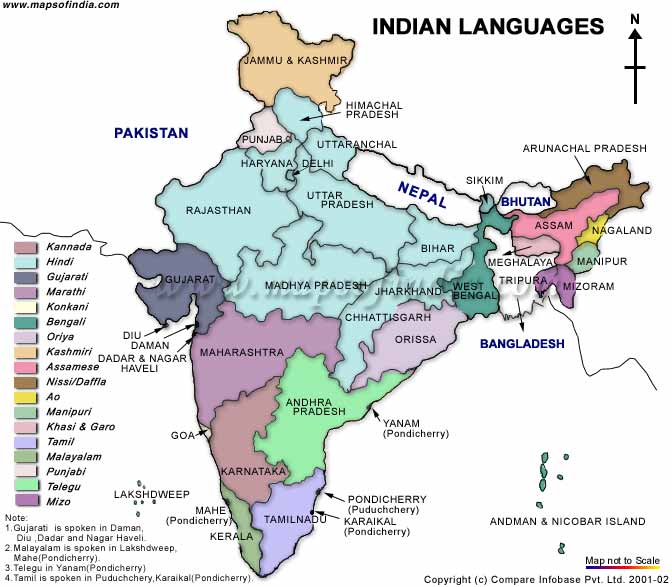


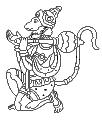 CDAC is Pune's Center for Development of Advanced Computing. They sell typefaces for all Indic languages. They introduced the Indian Script FOnt Code (ISFOC) standards to enable composing Indian language text. Scripts covered include Devnagari (Hindi, Marathi), Gujarati, Punjabi, Kannada, Bengali, Assamese, Tamil, Telugu, Malayalam, Oriya, Sanskrit, Diacritic Roman, Sinhalese, Bhutanese, Nepali, Tibetan.
CDAC is Pune's Center for Development of Advanced Computing. They sell typefaces for all Indic languages. They introduced the Indian Script FOnt Code (ISFOC) standards to enable composing Indian language text. Scripts covered include Devnagari (Hindi, Marathi), Gujarati, Punjabi, Kannada, Bengali, Assamese, Tamil, Telugu, Malayalam, Oriya, Sanskrit, Diacritic Roman, Sinhalese, Bhutanese, Nepali, Tibetan.  Czech designer (b. Brno) who graduated with a Masters in Informatics at the Masaryk University in Brno in 2005, spent a term at the Denmark's Designskole in Copenhagen in 2004 and graduated with distinction from the MA in Typeface Design at the
Czech designer (b. Brno) who graduated with a Masters in Informatics at the Masaryk University in Brno in 2005, spent a term at the Denmark's Designskole in Copenhagen in 2004 and graduated with distinction from the MA in Typeface Design at the 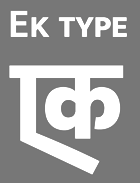 Type design collective in Mumbai, India, est. 2013, managed by Mumbai-based Sarang Kulkarni (b. 1980). Sarang studied at the Sir J J Institute of Applied Art in Mumbai, class of 2002. He worked with R.K. Joshi at the National Centre for Software Technology and Design Temple in 2002. In that same year, he assisted R.K. Joshi with the design of the Jana Gurmukhi typeface. In 2008 and 2009, he created 11 Indic typefaces for Vodafone India. In 2009-2010, he created an additional eight typefaces for Virgin Mobile India. Kulkarni also runs
Type design collective in Mumbai, India, est. 2013, managed by Mumbai-based Sarang Kulkarni (b. 1980). Sarang studied at the Sir J J Institute of Applied Art in Mumbai, class of 2002. He worked with R.K. Joshi at the National Centre for Software Technology and Design Temple in 2002. In that same year, he assisted R.K. Joshi with the design of the Jana Gurmukhi typeface. In 2008 and 2009, he created 11 Indic typefaces for Vodafone India. In 2009-2010, he created an additional eight typefaces for Virgin Mobile India. Kulkarni also runs 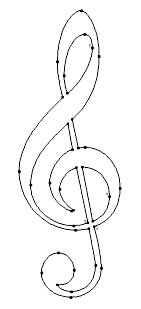 The GNU Freefont is continuously being updated to become a large useful Unicode monster. GNU FreeFont is a free family of scalable outline fonts, suitable for general use on computers and for desktop publishing. It is Unicode-encoded for compatability with all modern operating systems. There are serif, Sans and Mono subfamilies. Also called the "Free UCS Outline Fonts", this project is part of the larger Free Software Foundation. The original head honcho was
The GNU Freefont is continuously being updated to become a large useful Unicode monster. GNU FreeFont is a free family of scalable outline fonts, suitable for general use on computers and for desktop publishing. It is Unicode-encoded for compatability with all modern operating systems. There are serif, Sans and Mono subfamilies. Also called the "Free UCS Outline Fonts", this project is part of the larger Free Software Foundation. The original head honcho was  [
[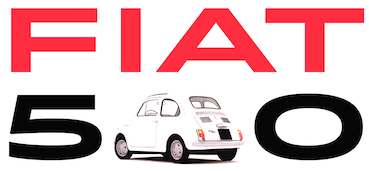 Designer of these typefaces:
Designer of these typefaces: 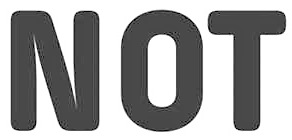 ITF is located in Ahmedabad, Gujarat, India. It was co-founded in 2009 by Peter Bilak (Typotheque) partnered with Rajesh Kejriwal (
ITF is located in Ahmedabad, Gujarat, India. It was co-founded in 2009 by Peter Bilak (Typotheque) partnered with Rajesh Kejriwal ( Indolipi is a multipurpose tool box for indologists and linguists that contains Open Type fonts for most Indian scripts, a Latin font for "instant" transliteration of Indic scripts, and a Unicode based Latin font for writing of scientific texts in a western language containing all transliteration signs used by indologists as well as all presently valid IPA signs. All fonts were made from 2004 until 2006 by Elmar Kniprath (Asien-Afrika institut, University of Hamburg, Germany): e-Bengali OT (for Assamese and Bengali), e-Grantamil (for Grantha Sanskrit, Tamil and Manipravala), e-Grantha OT (for Sanskrit), e-Gujarati OT, e-Kannada OT, e-Malayalam OT (for modern Malayalam), e-Malayalam OTC (for Malayalam with classical orthography), e-Nagari OT (for Sanskrit and Nepali), e-Nagari OTH (for Hindi), e-Nagari OTM (for Marathi), e-Nagari OTR (for Rajasthani), e-Panjabi OT (for Gurmukhi script), e-Sinhala OT, e-Tamil OT (for modern Tamil), e-Tamil OTC (for Tamil with classical orthography), e-Telugu OT, e-Latin Indic (for "instant" Latin transliteration of Indic Unicode texts), e-PhonTranslit UNI (for writing indological texts in a language based on Latin script, also containig all valid IPA signs and a lot of arrows, mathematical and logical signs).
Indolipi is a multipurpose tool box for indologists and linguists that contains Open Type fonts for most Indian scripts, a Latin font for "instant" transliteration of Indic scripts, and a Unicode based Latin font for writing of scientific texts in a western language containing all transliteration signs used by indologists as well as all presently valid IPA signs. All fonts were made from 2004 until 2006 by Elmar Kniprath (Asien-Afrika institut, University of Hamburg, Germany): e-Bengali OT (for Assamese and Bengali), e-Grantamil (for Grantha Sanskrit, Tamil and Manipravala), e-Grantha OT (for Sanskrit), e-Gujarati OT, e-Kannada OT, e-Malayalam OT (for modern Malayalam), e-Malayalam OTC (for Malayalam with classical orthography), e-Nagari OT (for Sanskrit and Nepali), e-Nagari OTH (for Hindi), e-Nagari OTM (for Marathi), e-Nagari OTR (for Rajasthani), e-Panjabi OT (for Gurmukhi script), e-Sinhala OT, e-Tamil OT (for modern Tamil), e-Tamil OTC (for Tamil with classical orthography), e-Telugu OT, e-Latin Indic (for "instant" Latin transliteration of Indic Unicode texts), e-PhonTranslit UNI (for writing indological texts in a language based on Latin script, also containig all valid IPA signs and a lot of arrows, mathematical and logical signs). 
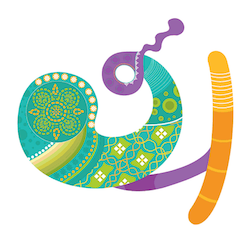 Mumbai, India-based designer of the Gujarati display typeface Babuchak (2014). She developed this in a class taught by Rucha Suryawanshi. [
Mumbai, India-based designer of the Gujarati display typeface Babuchak (2014). She developed this in a class taught by Rucha Suryawanshi. [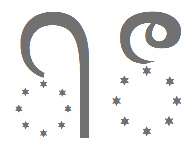 Jonathan (Jonny) Pinhorn is a British type designer and India enthusiast who obtained an MA in typeface design from
Jonathan (Jonny) Pinhorn is a British type designer and India enthusiast who obtained an MA in typeface design from 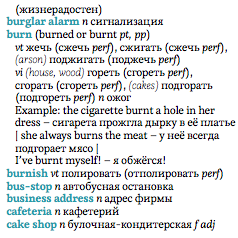 Lisa Fischbach (Kiel, Germany) studied at the Muthesius Academy of Fine Arts and Design in Kiel. She graduated from the MATD program at the University of Reading in 2014. Her graduation typeface there was called
Lisa Fischbach (Kiel, Germany) studied at the Muthesius Academy of Fine Arts and Design in Kiel. She graduated from the MATD program at the University of Reading in 2014. Her graduation typeface there was called  German-born graduate of the
German-born graduate of the 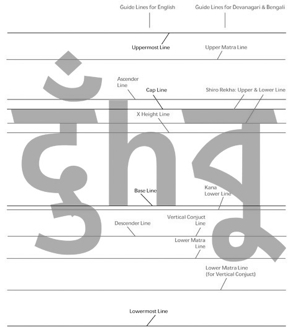 Indian type designer and typographer who received the Gutenberg Prize in 2010. Professor Patel retired from the National Institute of Design, Ahmedabad, in 2003, and presently s an adjunct professor at Symbiosis Institute of Design and MIT Institute of Design, both at Pune. His type design activities:
Indian type designer and typographer who received the Gutenberg Prize in 2010. Professor Patel retired from the National Institute of Design, Ahmedabad, in 2003, and presently s an adjunct professor at Symbiosis Institute of Design and MIT Institute of Design, both at Pune. His type design activities:  Mumbai-based codesigner of Modak Devanagari together with Sarang Kulkarni. The bubblegum typeface family Modak (Latin & Devanagari) was published in the
Mumbai-based codesigner of Modak Devanagari together with Sarang Kulkarni. The bubblegum typeface family Modak (Latin & Devanagari) was published in the  The list of new fonts in Windows 7 in 2009:
The list of new fonts in Windows 7 in 2009: 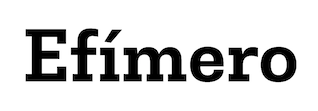 Indian graduate of New Delhi's National Institute of Fashion Technology and the
Indian graduate of New Delhi's National Institute of Fashion Technology and the  [
[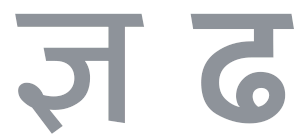 Pria Ravichandran (formerly Pria Adireddi, b. 1984, India) studied type design
Pria Ravichandran (formerly Pria Adireddi, b. 1984, India) studied type design  Typography professor R.K. Joshi's pages. He was born in 1936 in Kolhapur, Maharashtra, India, and died in San Francisco in 2008. He was a poet, calligrapher, designer, researcher, teacher and
Typography professor R.K. Joshi's pages. He was born in 1936 in Kolhapur, Maharashtra, India, and died in San Francisco in 2008. He was a poet, calligrapher, designer, researcher, teacher and  Rosetta is an independent foundry, set up in 2011 by David Brezina, José Scaglione and Veronika Burian, with a strong focus on multi-script typography. It is headquartered in Brno, Czechia. Other designers include Anna Giedrys, Amélie Bonet and Titus Nemeth. They specialize in multilingual typefaces.
Rosetta is an independent foundry, set up in 2011 by David Brezina, José Scaglione and Veronika Burian, with a strong focus on multi-script typography. It is headquartered in Brno, Czechia. Other designers include Anna Giedrys, Amélie Bonet and Titus Nemeth. They specialize in multilingual typefaces. 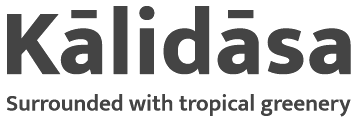 [
[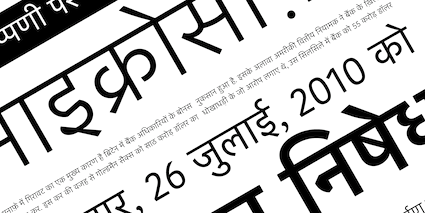 Satya is co-founder of the
Satya is co-founder of the  Icelandic designer and type designer in Reykjavik (and now Germany). Co-founder of Universal Thirst, an Indian and Icelandic type foundry that makes typefaces for the Indic, Latin and Arabic scripts. Gunnar studied graphic design at Iceland University of the Arts, and worked briefly in Reykjavik's creative industry before becoming a freelance designer and focusing on collaborations within the cultural sector. After completing his M.A. in Typeface Design at the University of Reading in 2010, he joined Monotype's London studio, working on major type projects for global brands. Since launching in 2016, Universal Thirst has taken on bespoke projects for Google, The Gourmand, Frieze Art Fair, DesignMarch, Monotype and Falcon Enamelware, and is scheduled to open its font library to the world in 2019.
Icelandic designer and type designer in Reykjavik (and now Germany). Co-founder of Universal Thirst, an Indian and Icelandic type foundry that makes typefaces for the Indic, Latin and Arabic scripts. Gunnar studied graphic design at Iceland University of the Arts, and worked briefly in Reykjavik's creative industry before becoming a freelance designer and focusing on collaborations within the cultural sector. After completing his M.A. in Typeface Design at the University of Reading in 2010, he joined Monotype's London studio, working on major type projects for global brands. Since launching in 2016, Universal Thirst has taken on bespoke projects for Google, The Gourmand, Frieze Art Fair, DesignMarch, Monotype and Falcon Enamelware, and is scheduled to open its font library to the world in 2019. 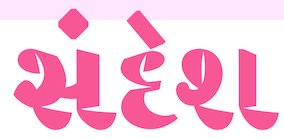 Type designer from Bangalore, India who graduated from the
Type designer from Bangalore, India who graduated from the